There’s no doubt coming to Australia to work, live or play is exciting. Your first question is usually, ‘which is the best city to live in?’. Answering that might take as long as the flight over here! This is partly due to the fact that when considering the best city to live, Australia offers plenty of compelling options. But we can help.
Here you will find a helpful guide to assist you when deciding which one best suits your budget, needs and lifestyle. The guide is based on key ‘quality of life’ indicators, and also highlights stand out characteristics of the best Aussie cities.
Determining the best city to live in Australia
When thinking about the best city to live in, the factors that first spring to your mind are probably related to quality of life. How much does it cost to live and work there? What’s the public transport scene like? Will I need a car? Is it safe? The Global Liveability Index looks at each of these things and more, and then classifies the best cities to live worldwide accordingly. Specifically, they’re ranked on a scale of acceptable to undesirable in their:
- stability
- healthcare
- culture and environment
- education
- infrastructure
It’s safe to say Australia fares pretty well on this list, with five of its major cities in the top 20:
- Melbourne 4th
- Sydney 7th
- Adelaide 11th
- Perth 15th
- Brisbane 16th
Then there’s the Life in Australia Ipsos survey. This one focuses on quality of life in Australian cities as reported by Aussies themselves. According to residents, these are the top five liveability attributes they consider most important:
- 60% feeling safe
- 50% high quality health services
- 46% affordable decent housing
- 42% access to the natural environment
- 41% reliable and efficient public transport
Based on these factors, they rank the best city to live in Australia out of a score of 100 as:
- Perth: 64.7
- Sydney: 64.1
- Adelaide: 63.6
- Melbourne: 62.8
- Brisbane: 61.5
When you compare The Global Liveability Index and Ipsos resident survey, it’s interesting to see Australia’s two biggest cities are overruled in popularity by a relatively smaller one, Perth. This may be due to a few factors:
- The Global Liveability Index considers international standards, while the Ipsos survey focuses on residents’ actual lived experiences and priorities
- Smaller cities, like Perth, often get the balance right when it comes to access to urban amenities and big green spaces.
- Perth is cheaper when it comes to overall living expenses; a Deloitte Access Economics report found it has the lowest average household spend overall, coming in 10% lower than Melbourne, 19% lower than Brisbane, and 24% lower than Sydney.
Other interesting insights between the two liveability reports is that Adelaide ranks well both domestically (3rd) and globally (11th), even though it’s a much ‘lesser known’ city.
Sadly, smaller cities face challenges; Darwin and Hobart rank lowest domestically, failing to even get a mention in the global top 20. Overall, it seems that while Aussie cities are highly liveable by global standards, there are still areas for improvement from a domestic perspective, especially when it comes to affordable housing. For example, January 2025 CoreLogic data shows the median house value in Australia is $814,837, with Sydney at an eye-watering $1,191,955 and Melbourne $774,093. This puts Australia’s property prices almost 90% higher than the global average, according to Finder.
Interestingly, Perth property values surged by 19% over the past year, placing the median house value at $813,016. Perhaps Perth may not hold on to that top spot in the Ipsos survey for much longer! While these figures might sound a little alarming, it’s important to keep in mind that Australia remains one of the world’s most exceptional destinations for living and working. The availability of high-quality healthcare, education, public transport, entertainment and cultural activities is almost unsurpassed.
Let’s now look at the individual cities that ranked highly on both the The Global Liveability Index and domestic Ipsos survey to uncover what makes each one so special. We’ve chosen to highlight only two of the most common cost of living measures; rent and groceries. All figures are drawn from Domain and Compare the Market. If you want to know more about the cost of living in Australia overall, this article helps.
Melbourne, Victoria
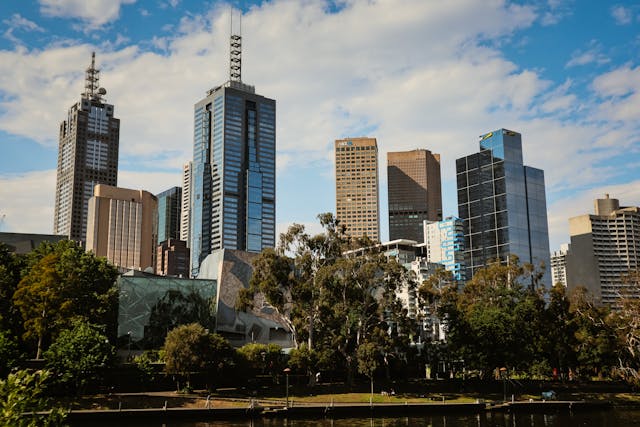
Melbourne boasts an amazing mix of almost all the things you’d want in a great city. World-class amenities (health, education and job opportunities just to name a few), a relatively relaxed lifestyle, a vibrant arts scene, and some spectacular natural wonders (Great Ocean Road, Phillip Island, rugged coastlines and beaches, Dandenong Ranges, Werribee Gorge and so on).
It’s also a melting pot of nationalities, home to a large migrant population who have positively influenced its cultural, food and festival scene. When it comes to what Melbourne does really well, it’s got to be sport, food, shopping and culture. It’s home to the great MCG, Marvel Stadium, Rod Laver Arena and Margaret Court Arena, who when combined, host hundreds of thousands of sports and music fans each year. The food is second to none. You’ll encounter an abundance of amazing restaurants at all price points; dedicated cuisine precincts such as Lygon Street and Chinatown; markets to suit any palate (from Queen Vic to weekly farmer’s markets); and of course, traditional big name and smaller local grocery stores.
You can shop up a storm at high end retailers, outlets, department stores, boutiques, or specialty stores that focus on artisan or sustainable items. And you can top that off with a spot of culture at any number of museums, galleries and festivals. While there’s a plethora of things to see and do within the city, the regional areas have plenty to offer too. With regional train travel capped at $11 per day for an adult ticket, you can explore almost the entire state for really not much at all. The final note goes to the weather and she’s a wily mistress down in Melbourne. Think four seasons in one day and you’ve got it just about right. But variety is the spice of life right?
Rent
- House $580 weekly
- Unit $550 weekly
Grocery Spend
- $216 weekly
Rankings
- The Global Liveability Index – 4th
- Life in Australia Ipsos – 4th (62.8/100)
Pros
- High quality health services, Shopping, leisure & dining, Access to natural environment (6.8/10)
- Viewing & participating in sports & recreation (6.7/10)
- High quality education opportunities, Feeling safe, Social cohesion (6.5/10)
- Reliable & efficient public transport , Getting to & from services with ease (6.4/10)
Cons
- Affordable housing (5.1/10)
- A lack of road congestion (5/10)
Melbourne has enjoyed top ranking as one of the world’s most liveable cities for what seems like an age. Then the pandemic hit and shortly after, their top-tier ranking took a hit too. While the city hasn’t quite reached its pre-pandemic glory yet, it still ranks fourth both globally and domestically, according to The Global Liveability Index and Ipsos report.
Sydney
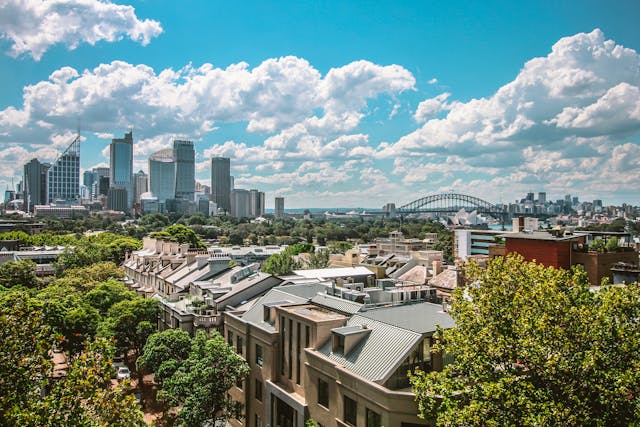
Sydney is like a supermodel in some ways – stylish, sophisticated and a natural beauty. The city is renowned for its stunning harbour, encompassing the gorgeous Sydney Opera House and Harbour Bridge, both gently hugging a thriving metropolis that offers plenty of job opportunities, shopping adventures, iconic and cultural landmarks, and world-class healthcare and education (the city scored a perfect 100/100 in both categories in the Global Liveability Index). Its beauty knows no bounds; from Bondi to Manly, Sydney boasts some of the world’s best coastline, filled with stunning beaches and walks. Venturing out a bit further brings you to awe-inspiring places like the Blue Mountains.
Like Melbourne, Sydney is a cultural melting pot, with migrants bringing cultural diversity to the city and its suburbs. Education is also a feature with plenty of top-tier institutions like the University of Sydney and UNSW. The main downside (and it’s the reason for its drop in rankings) is the super high cost of living, particularly in housing. But on the upside, the climate is beautiful most of the year – warm summers and mild winters, but they do also get a good share of rain.
Like Melbourne, Sydney has consistently been up there as one of the world’s most liveable cities. In 2024, it came in 7th globally (albeit a bit of drop from its 4th placing in 2023), but levelled up domestically at 2nd.
Rent
- House $775 weekly
- Unit $720 weekly
Grocery spend
- $212 weekly
Rankings
- The Global Liveability Index – 7th
- Life in Australia Ipsos – 2nd (64.1/100)
Pros
- Feeling safe (7/10)
- Access to natural environment, High quality health services (6.9/10)
- Shopping, leisure & dining (6.7/10)
- High quality education opportunities, Reliable & efficient public transport, Viewing and participating in sports & recreation (6.6/10)
- Opportunity for all, Social cohesion (6.5/10)
Cons
- A lack of road congestion (5.5/10)
- Affordable housing (5/10)
Adelaide, South Australia
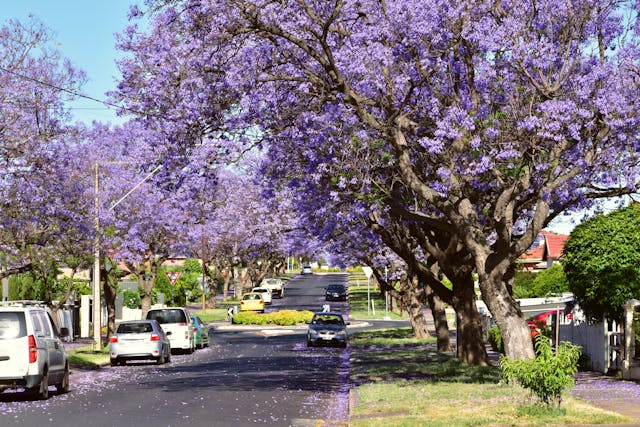
Adelaide has been steadily climbing the global liveability rankings. In 2024, it ranked 11th globally but took out the number three spot domestically. It seems those who live there understand and appreciate its charm.
Adelaide is definitely quieter than Sydney or Melbourne, offering a laidback lifestyle and a compact and well-planned cityscape. It also has a lower cost of living, especially when it comes to housing. There remains a big focus on education with the prestigious University of Adelaide and University of South Australia, but perhaps not as much opportunity when it comes to jobs. That being said, they do have a thriving wine scene with the Barossa Valley and McLaren Vale wineries just two notables, so hospitality jobs may be a little easier to come by.
As for natural beauty, the coastline is home to popular beaches like Glenelg, while the city itself – affectionately known as the ‘City of Churches’ – has plenty of parks and gardens. You can visit regional beauties such as Hahndorf, the oldest surviving German settlement, a town filled with artisan food producers, craft breweries and historical walking tours. Weather-wise, Adelaide has a Mediterranean climate with four distinct seasons. It can get super-hot in the summer but winters are on the milder side.
Rent
- House $600 weekly
- Unit $495 weekly
Grocery spend
- $193 weekly
Ranking
- The Global Liveability Index – 11th
- Life in Australia Ipsos – 3rd (63.6/100)
Pros
- Access to natural environment (7.3/10)
- Shopping, leisure & dining (6.9/10
- Feeling safe (6.8/10)
- High quality education opportunities (6.7/10)
- Viewing and participating in sports & recreation (6.6/10)
- Social cohesion, Getting to & from services with ease (6.5/10)
Cons
- Good job prospects (5.6/10)
- Affordable housing (5.3/10)
Perth, Western Australia
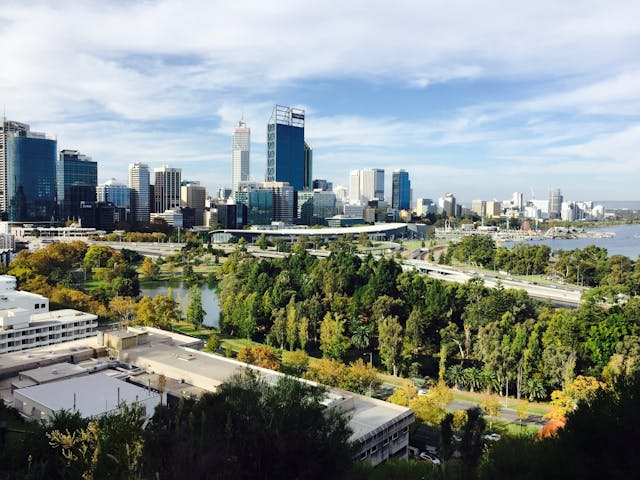
Perth is an exceptionally well-planned out city, built around the idyllic Swan River and coastline to take advantage of afternoon sea breezes (very welcome on scorching summer’s day!). While the city clearly has an abundance of stunning beaches, it also has plenty of green spaces like the expansive Kings Park, another place of welcome respite when the temperature soars. The city has a strong export-oriented economy, fuelled by its abundant mining and natural resources sector. This also means there’s plenty of jobs going in this area.
It’s a great place for those who want to live an outdoor lifestyle, with well-constructed cycling and walking paths, and heaps of water-based activities. Rottnest Island is a short ferry trip away and is a must see destination, for both locals and visitors. The same can be said for the famous Margaret River wine region. As a local puts it, ‘a two lane road is considered a big deal’ in Perth, so traffic isn’t anywhere near what it is in other Aussie cities. It’s a rather peaceful commute into the office instead, and a great boon for those who want to live further out from the city.
Unfortunately, it seems most of Australia has clocked on to the wonders of Perth with housing prices soaring by an astronomical 19% in the last year. It’s currently more expensive to buy a home in Perth, than it is in Melbourne.
Rent
- House $660 weekly
- Unit $570 weekly
Grocery spend
- $214 weekly
Rankings
- The Global Liveability Index – 15th
- Life in Australia Ipsos – 1st (64.7/100)
Pros
- Access to natural environment (7.4/10)
- Shopping, leisure & dining, Viewing and participating in sports & recreation (6.8/10)
- Feeling safe, High quality health services (6.7/10)
- High quality education opportunities, Getting to & from services with ease (6.6/10)
Cons
- Museums, galleries & festivals, Good job prospects (5.7/10)
- Affordable housing (5.1/10)
The most apt and Australian way to describe Perth is ‘she’s a beauty!’. It’s no surprise then that domestically it takes out the number one spot as the most liveable city.
Brisbane, Queensland
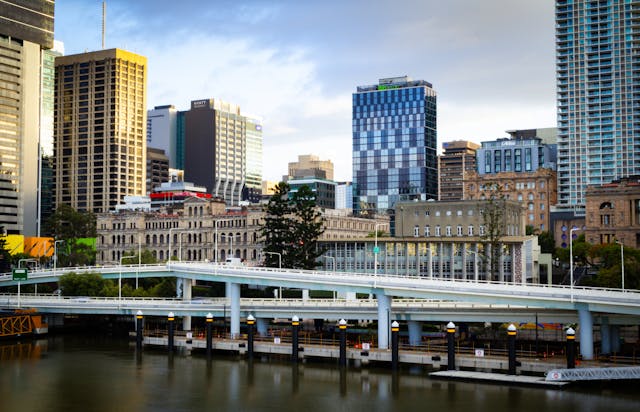
Well-known for its sunny subtropical climate, Brisbane is a popular place to live, sitting at the number five spot as the most liveable city domestically. Perhaps the biggest perk of living in Brissy (as it’s affectionately known) is the year-round warm weather.
Next is the chance to enjoy a vibrant outdoor lifestyle with plenty of parks and the Brisbane River, plus a short drive gets you to the beautiful beaches and associated entertainment on the Gold and Sunshine Coasts.
Home to quality institutions like the University of Queensland and Queensland University of Technology, Brisbane has become a popular choice for both families and international students.
The jobs market is pretty healthy especially in the healthcare, education, technology, tourism and construction sectors. With a fairly slow-pace of life, it’s a good mix of urban and relaxed living. That is if you can handle the heat and humidity!
Rent
- House $625 weekly
- Unit $590 weekly
Grocery spend
- $210 weekly
Ranking
- The Global Liveability Index – 16th
- Life in Australia Ipsos – 5th (64.7/100)
Pros
- Access to natural environment (6.9/10)
- Feeling safe (6.7/10)
- High quality education opportunities (6.6/10)
- High quality health services, Viewing and participating in sports & recreation (6.5/10)
- Shopping, leisure & dining (6.4/10)
Cons
- Affordable housing, Lack of road congestion (5.0/10)
How to decide which is the best city to live in Australia
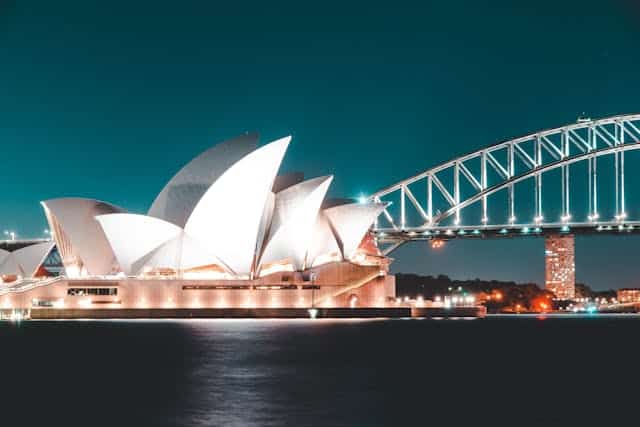
This list of Australia’s most liveable cities really showcases why it’s such a popular country to live, work and play.
Melbourne shines for its sporting, food and cultural offerings; Sydney for its job opportunities, beaches and harbour side delights; Adelaide for its all-round affordability and family-friendly environment; Brisbane for its economic prospects and warm climate; and Perth for its laid-back outdoor lifestyle and natural wonders.
Picking where to call home is a tough decision, especially with Australia’s smorgasbord of choice! It’s also a very individual decision and one you should based on what’s most important to you, and your family (if bringing them along).
Take the time to really think about not only your career goals (if applicable) and lifestyle aspirations, but what a long-term future might look like. Does the city you’re interested in align with that?
Good luck – it’s a tough, but ultimately very rewarding decision.